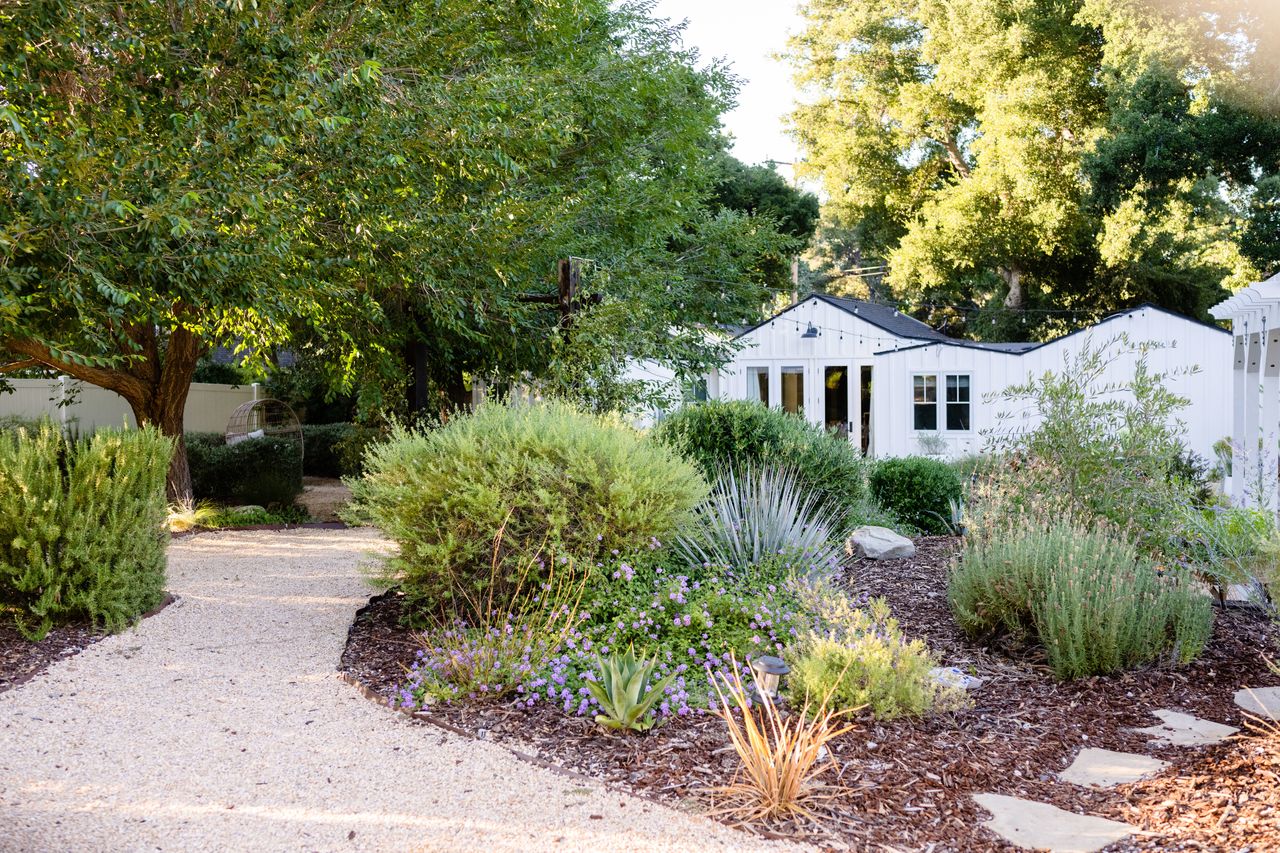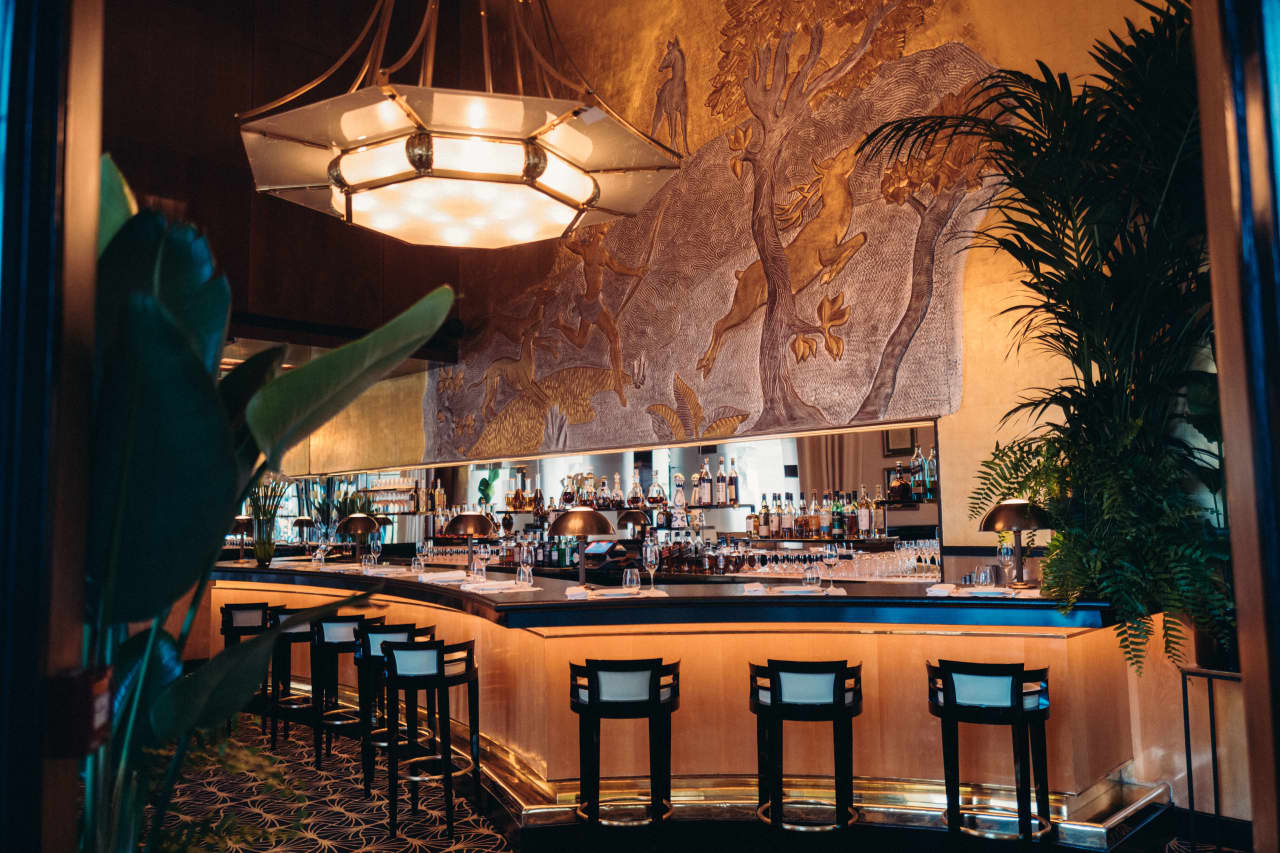Meet the Homeowners Spending Tens of Thousands to Let Their Lawns Go Wild
A growing number of people across the U.S. are ditching manicured grass for native plants and trees
Within Denver’s Washington Park neighbourhood, an enclave south of downtown where the median house listing price is just over $2 million, quintessential manicured American lawns roll out in front of historic brick bungalows, restored Victorians and contemporary new builds. Then there is Lisa Negri’s yard, which sits adjacent to her three-bedroom, two-bathroom bungalow where she’s lived since 2012.
“It looks like nature,” says Negri, 66, a retired engineer.
Roughly 50,000 plants comprising 92 species engulf her 0.14-acre lot, which until 2020 sported green lawn grass. She estimates the yard has cost roughly $75,000 for plants, bulbs, seeds and hardscaping. Negri’s creation, designed by Denver Botanic Gardens assistant curator of horticulture Kevin Philip Williams, rejects the time-honoured status symbol of a tidy lawn in favour of a new luxury: the rewilded yard.
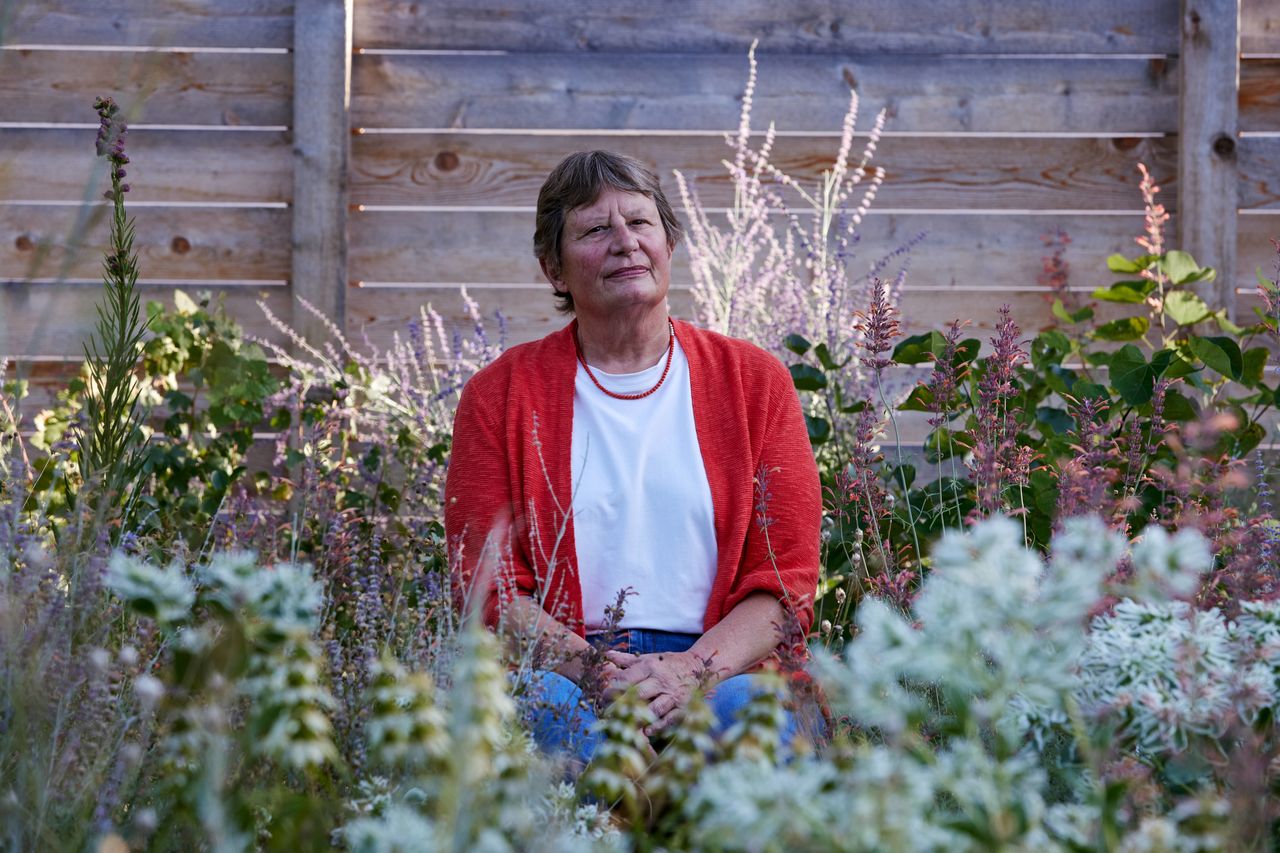
“Rewilding is returning land to a more natural state,” says Allison Messner, co-founder and CEO of Yardzen, a landscape design company with clients nationwide. Rewilding a yard typically involves introducing regionally appropriate plants, also called native plants, and fostering habitats for local wildlife. People come to the practice for myriad reasons. Some people want to support pollinators; some want to avoid water-guzzlers; others want to signal they are climate conscious. But the overarching purpose is universal: to encourage the flourishing of natural ecosystems and to mitigate the effects of habitat loss and climate change.
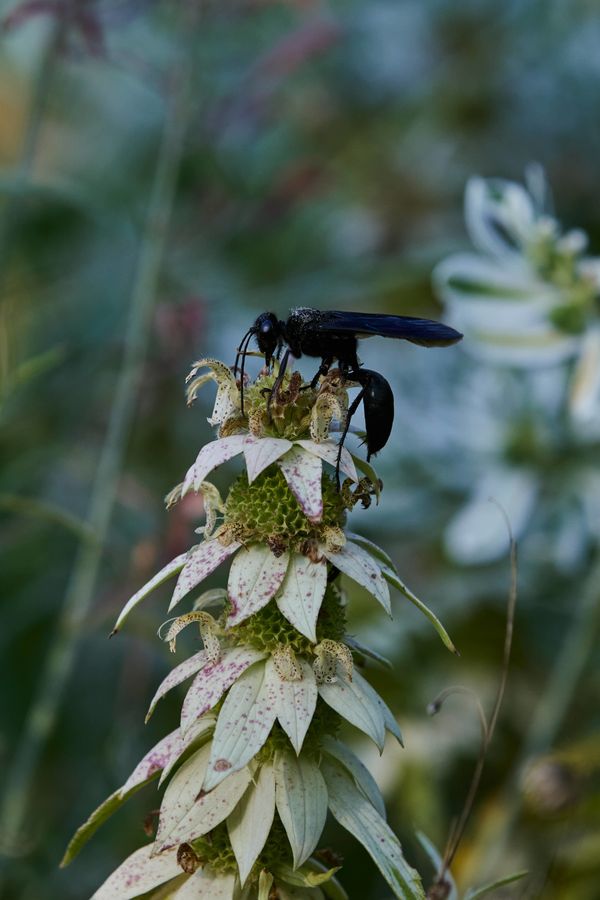
In Negri’s yard, this means interweaving prairie grasses and southwestern shrubs commingle with pockets of bulbs, wildflowers and succulents, all chosen to thrive in Denver’s climate, which is warm and dry in the summer and harsh in the winter, and has fierce year-round sun because of the altitude. Plants also specifically open the door to animals, insects, fungi and bacteria.
The space is one big meshed movement that throughout the year waxes and wanes in colour, height, shape and texture. A low-slung, post-winter skeletal brown becomes spring’s sprouting rainbow of lush hues, which gives way to summer’s 8-foot, reach-for-the-sky feathery silvers and waxy blues before fall’s explosion of radioactive yellows and Martian reds take hold for a last gasp as winter’s white waits in the wings.
A total of 9,000 plants and bulbs were planted in 2020, largely with help from neighbours and friends. Since then, Negri has planted fewer than 1,000 new plants but has added a large number of seeds. It took a year of significant watering to get roots established. Now the only substantial maintenance required is cutting the yard to the ground in the spring and watering two to three times a year.
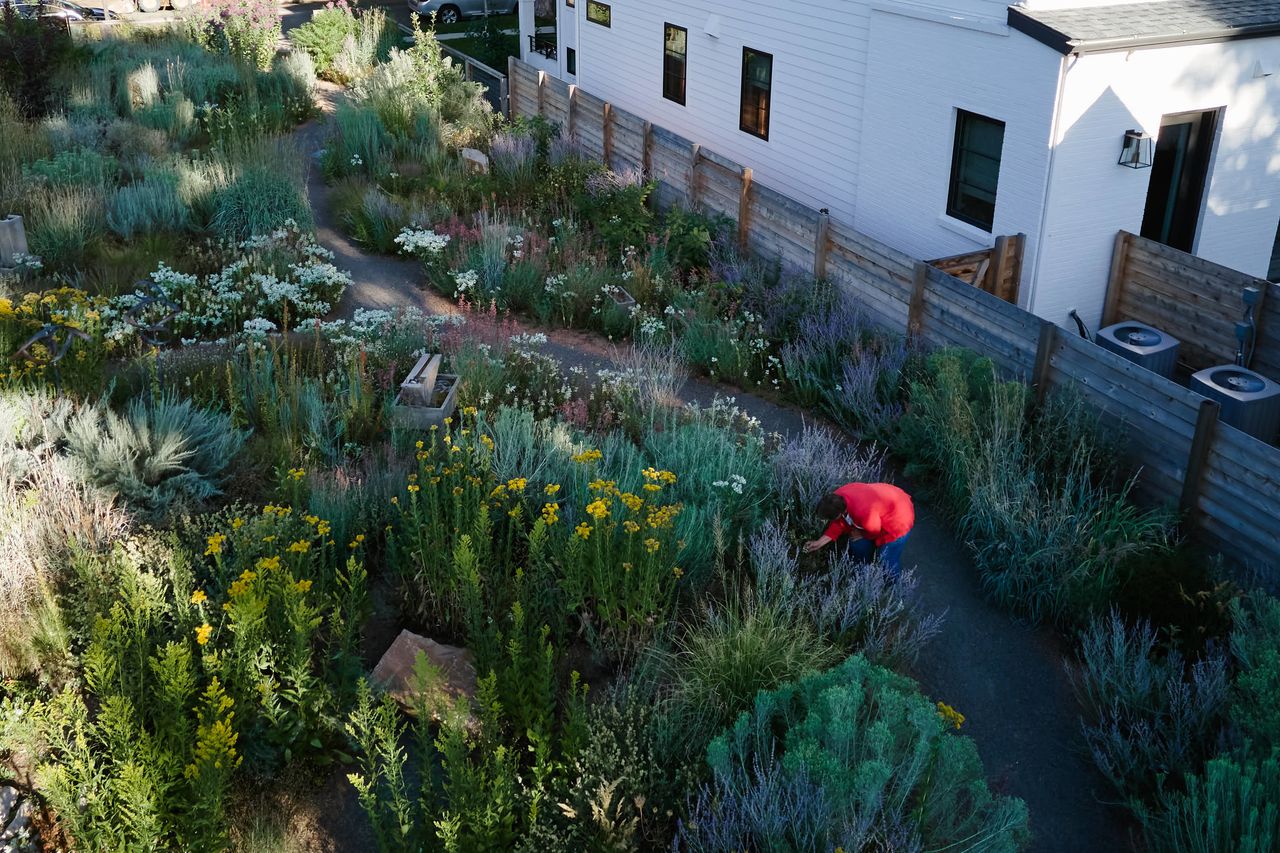
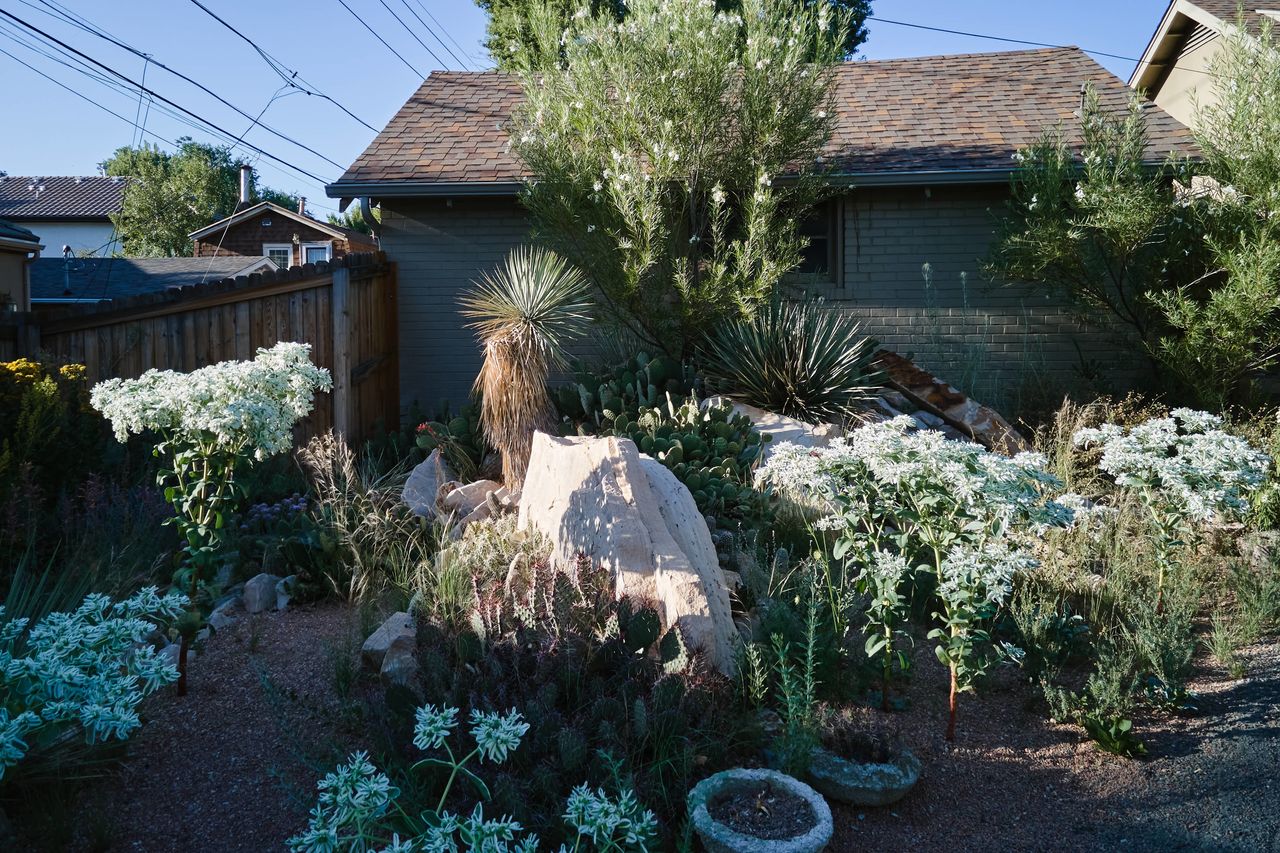
“A niche group of people has supported yard rewilding over the past decade or so, but recently it’s become much more mainstream,” Messner says. In 2022, Yardzen saw a 66% year-to-year increase in clients replacing green lawn grass with fully rewilded yards. “We’re not seeing thousands of people say, ‘Tear out my lawn and put in a rewilded yard,’ ” she says, but the majority of Yardzen’s clients are rewilding in some capacity. Last year, 90% of new Yardzen clients installed some type of native plants. “Things are moving in this direction,” she says.
Rewilded yards look different depending on climate and topography. In general, however, they support the web of life from below the ground up to the canopy, and every ecological layer in between, says Melissa Marie Wilson, CEO of Mill Valley, Calif.-based landscape firm Want Green Gardens. Lawns are nonexistent or minimized with native grasses. Plants bloom throughout the seasons. Native trees anchor the yard and provide wildlife with food and year-round shelter.
Eden Passante, 38, and Zan Passante, 47, worked with Yardzen to rewild their half-acre lot about 30 miles northwest of Los Angeles in the ranch community of Newhall, Calif. They purchased the property in 2016 for $560,000 and spent $400,000 gut-renovating their space, which totals 2,100 square feet and has three bedrooms, three bathrooms and a guesthouse. They estimate they have spent $65,000 on rewilding. Plants cost about $10,000; hardscaping cost the most. The bulk of the designing and planting took five months.
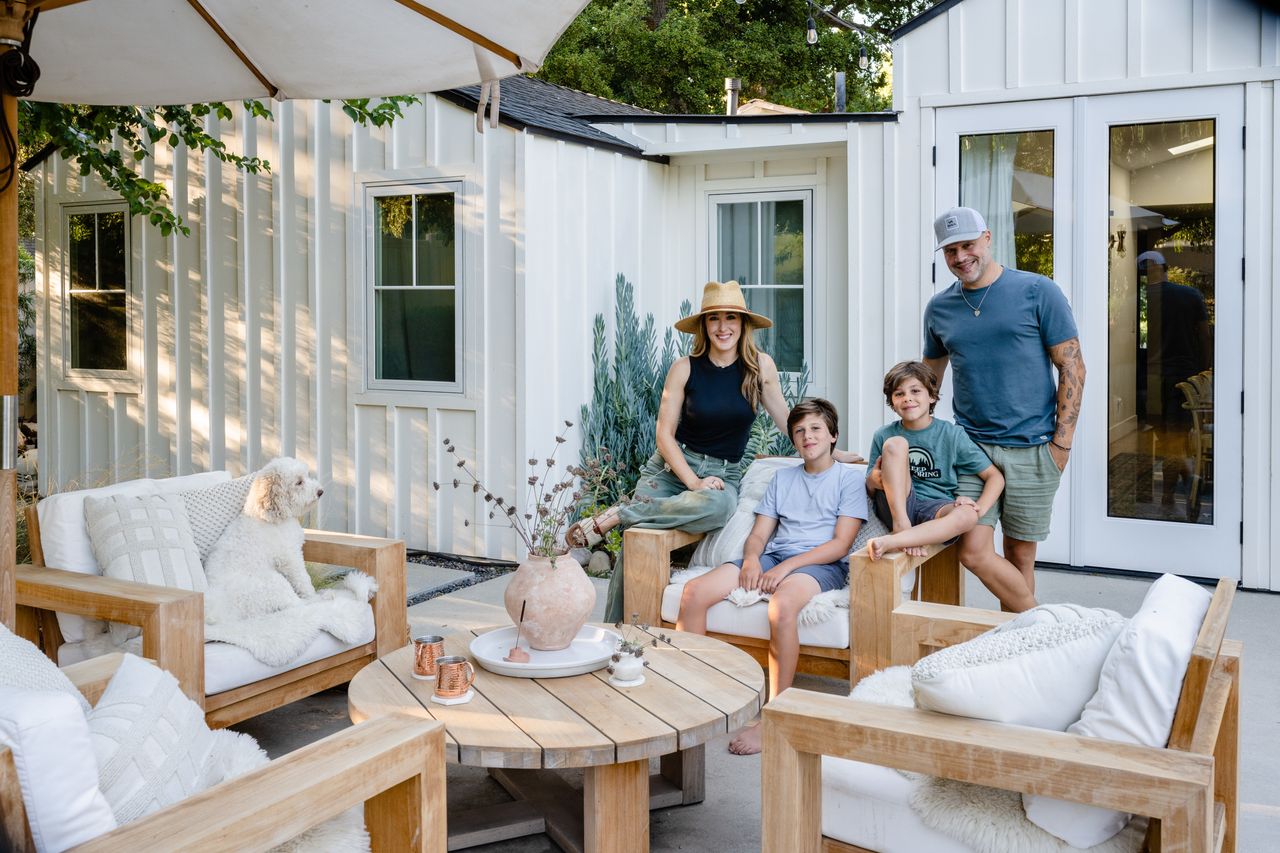
Today, the grassless yard is filled with whimsical flowers and succulents, such as blue chalksticks and large blue agaves. Gravel pathways lead to sitting and dining areas and a fire pit. There are garden beds for vegetables and edible flowers and a separate herb garden for mint, thyme, oregano and pineapple sage. A citrus grove has a Eureka lemon tree, a Meyer lemon tree, a yellow grapefruit tree, a lime tree and an orange tree.
“They are half native plants but all of the plants are drought-tolerant and zoned for this area,” says Eden Passante, who is the CEO of the home-entertaining website Sugar and Charm. Wildlife is active in the yard. A partridge laid 12 eggs under a bush. Pollinators love the blooming citrus trees.
The yard is low maintenance. “I try to let nature do its thing, but I remove any invasive weeds and keep the pathways nice,” she says. “The only difficulty is keeping the dust, rocks and pebbles out of the house.” Sometimes she wishes there was a soft play surface for her two young children.
Emily Murphy, an ethnobotanist with a background in ecology and environmental science and author of the regenerative gardening book Grow Now, says it is easy to get in the weeds with rewilding terminology. “It’s evolving in real time,” she says, noting that the word rewilding sprung up in conservation biology and ecology circles in the 1990s in reference to large-scale efforts to restore biodiversity and improve the integrity of landscape and natural systems.
Murphy says that rewilding a yard will obviously look very different from rewilding, say, a National Park. “Purists would say—and there is always a purist—that your yard can’t be compared to the reintroduction of wolves in Yellowstone.” But she believes that rewilded yards do contribute to the greater good. “Once you plant native plants, biodiversity will come,” she says, giving the example of a native oak tree, which can support roughly 2,300 species of animals and insects. In comparison, a non-native Chinese ginkgo has been documented to support five or fewer local species.
Jennifer Ehlert, vice president of landscape design firm Metro Blooms Design+Build in Minneapolis, says rewilding costs roughly the same as other landscaping. “A DIY pollinator patch might be in the hundreds,” she says. “Hiring a landscaping company to design and build some portion of a rewilded yard might be in the thousands. Rewilding your whole yard might be in the tens of thousands. If you’re into the hundreds of thousands, you have a huge property or you’re hardscaping as part of a bigger project.”
Dan Dufficy, founder of Mill Valley, Calif.-based California Native Landscapes nursery, encourages clients to start small. “Customers aren’t used to seeing these plants,” he says. “Their friends aren’t used to seeing these plants. They have no idea what the maturity of the product looks like.” To help clients get excited, he uses his hands to animate what plants look like and he uses vivid, educational language.
Not everyone is excited about yard rewilding. Homeowner associations can have landscape aesthetic rules. People who are allergic to bees have legitimate concerns. And then there are neighbours who just don’t get it.
Her first summer of rewilding, Lisa Negri in Denver received a cease-and-desist order from the city, which closed her down for eight months. “A neighbour called the city on me and said, ‘We don’t know what this person is doing. We’re afraid of it,’ ” Negri says. With the help of her garden designer and several horticulturists, she put together a 90-page presentation and ultimately received an open space conservation zoning designation, which is one of several types of conservation-related protections homeowners could pursue locally. Some cities—such as Austin, Texas, Evanston, Ill., and Green Bay, Wisc.—have passed ordinances in support of wildlife-friendly homeowners. This is also happening at the state level. In Minnesota, for example, a new state law bans cities from limiting managed natural landscapes.
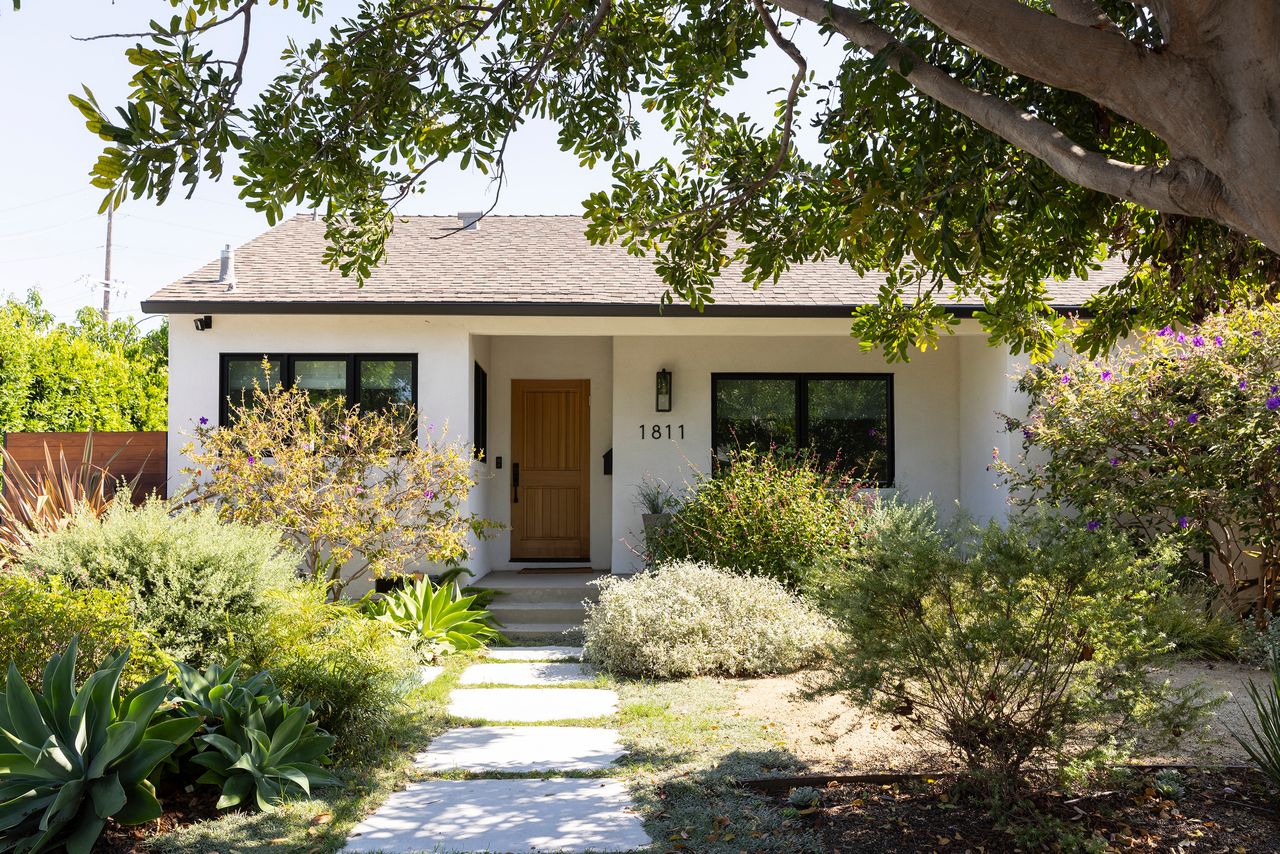
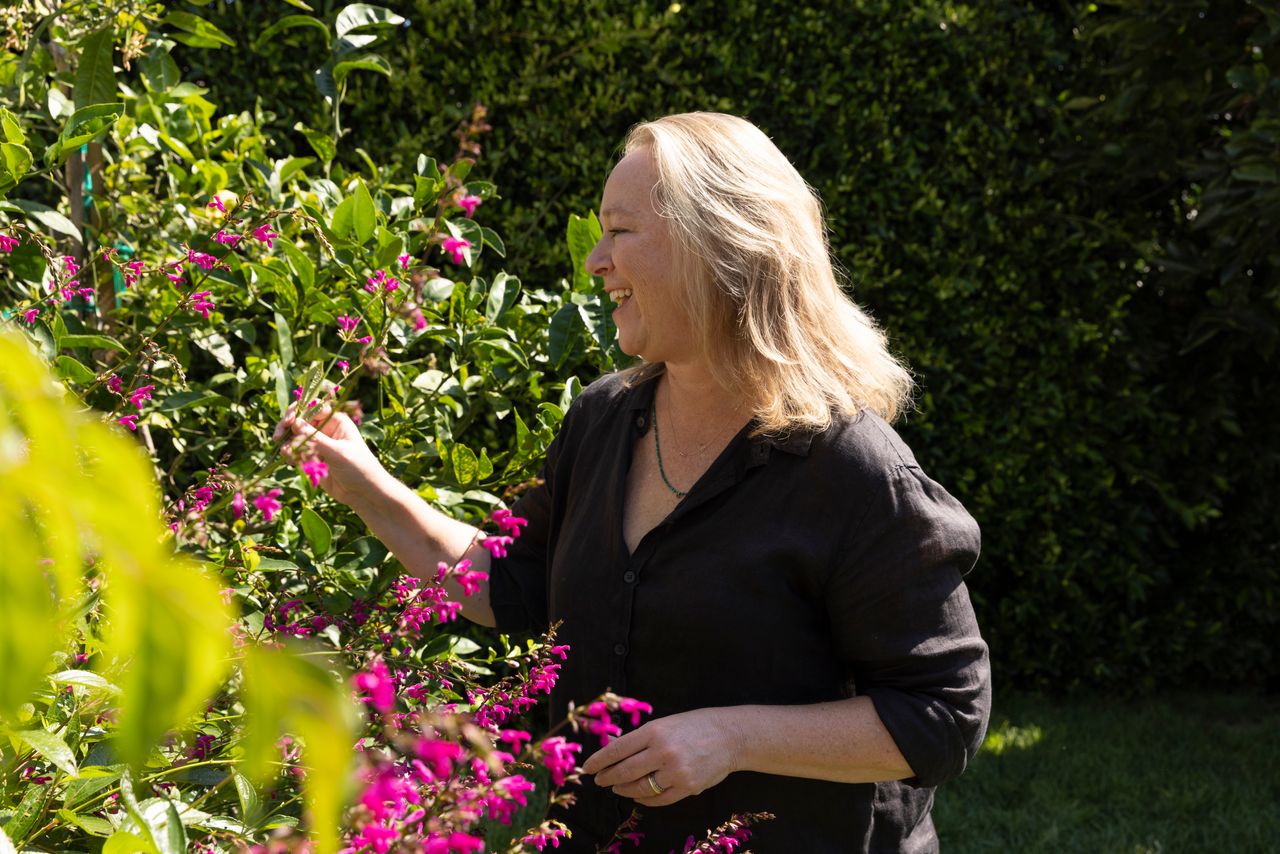
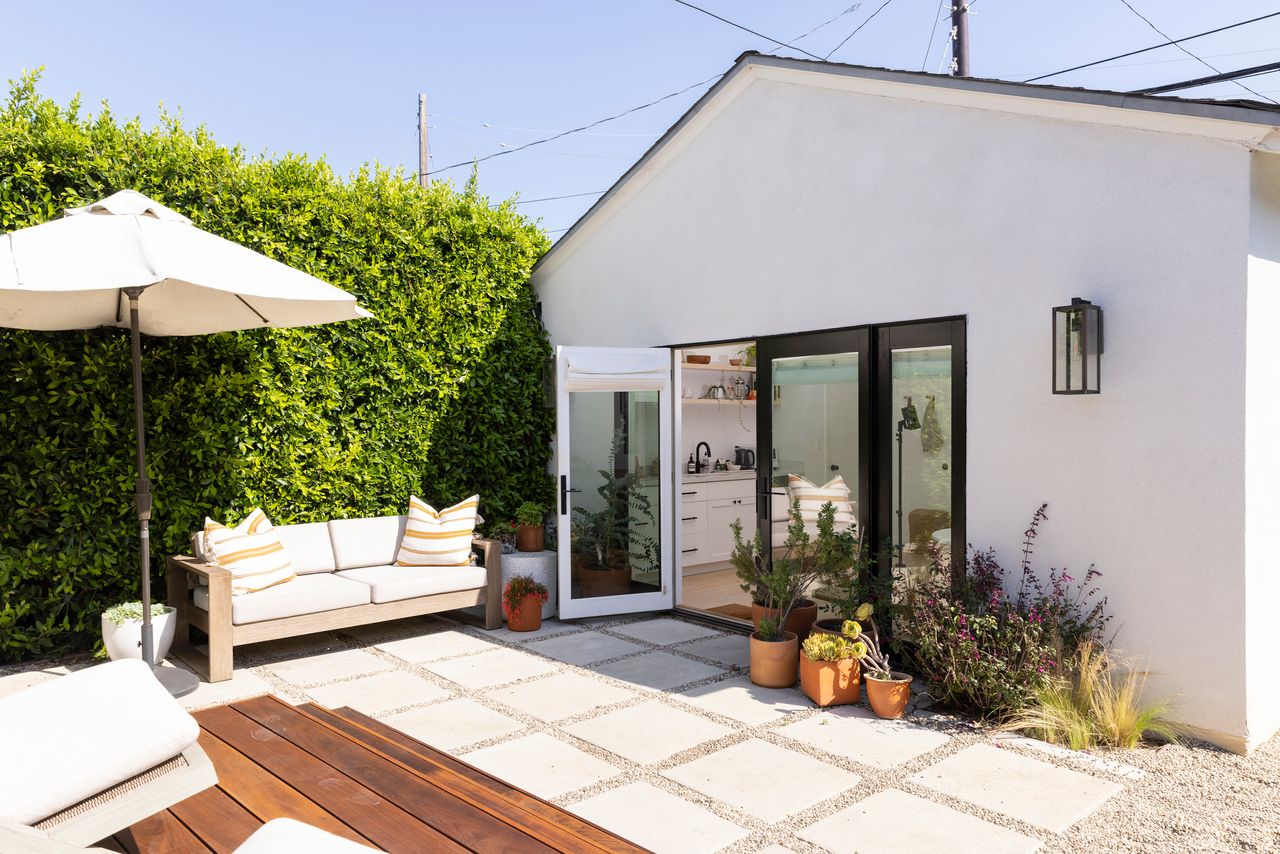
In Santa Monica, Calif., Roshanna Baron is having an opposite problem: Neighbours are copying her 0.13-acre rewilded yard. She and her husband, Nir Einhorn, 48, bought their house for $1.1 million in 2017. The couple received a landscaping blank slate when their yard was torn up during a nine-month renovation of their home, which has three bedrooms and two bathrooms, and totals 2,220 square feet, including their short-term rental guesthouse.
Planning their fully rewilded yard lasted about a month. Buying and installing $4,000 worth of plants took about two weekends with the help of a gardener. At first the landscaping felt empty, but after a year it was grown in. Three years later, the yard is colourful and warm with green- and blue-tinted plants, flowering succulents and a Meyer lemon tree. They kept a 75-year-old persimmon tree, the fruit of which keeps getting better as the yard’s soil improves.
“I’ve been stopped several times from husbands or wives saying they are planning on copying our yard,” says Roshanna Baron, 51, who works in entertainment industry talent relations and event planning. “One specifically told me he was copying everything because his wife loved it so much. A stranger parked in front of our home to tell me they aspire to have a yard like this.”
 Copyright 2020, Dow Jones & Company, Inc. All Rights Reserved Worldwide. LEARN MORE
Copyright 2020, Dow Jones & Company, Inc. All Rights Reserved Worldwide. LEARN MORE
This stylish family home combines a classic palette and finishes with a flexible floorplan
Just 55 minutes from Sydney, make this your creative getaway located in the majestic Hawkesbury region.
Luxury homes with decked-out family rooms, kitchens, primary bedrooms and bathrooms are standard today and practically a given. The latest mania, however, has owners glamming up their often overlooked garages and barns.
Called “toy barns,” “barndominiums” and “toy garages” in real estate circles and by the amenity-obsessed set, these functional spaces are being repurposed into gleaming showrooms filled with pricey outdoor gear—think ATVs, snowmobiles, electric bikes, boats and more.
Sitting areas, bars and diversions such as pool tables also figure in and turn barns and garages into entertainment venues that become a hub for owners to socialise with family and friends.
Take Jeff Collins, founder of Glennwood Custom Builders in Charlevoix, Michigan, for example. His lakefront home features a 2,500-square-foot barn with a lounging space, sleds, dirt bikes, a card table and a basketball hoop. The back doors open into a yard with a shooting range. “My friends come over a lot, and we hang the whole time in the barn,” Collins said. “We drink beers, play around with the equipment and shoot hoops. I can’t remember the last time we actually went into the house.”
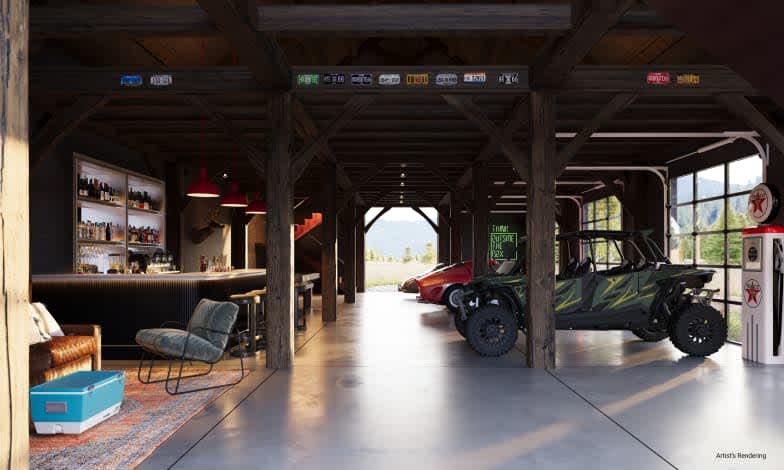
Courtesy Whitetail Club
Barndominiums like his are the craze in his town, according to Collins.
“They’re what everyone wants,” he said. “I’m building two for homes in my neighborhood and have inquiries for more.”
An Amenity That’s Gaining Popularity
Real estate agents and brokers who focus on upscale homes also report an increasing interest in toy barns and say that a property that offers one can attract more buyers than a listing with typical amenities such as swimming pools and wine cellars.
Timothy Di Prizito, the CEO of The Di Prizito Group & DPG Estates at Christie’s International Real Estate/AKG in Los Angeles, for instance, said that showpiece barns and garages are becoming a more popular feature in luxury homes, particularly in new construction properties.
“Wealthy owners are investing in turning their homes into resorts. It started with building commercial-sized gyms and onsite spa facilities,” he said. “Today, it’s all about having onsite entertainment annexes and auto galleries. They give a property a distinct edge.”
Di Prizito is currently selling a property called Bella Vista in Montecito for $70 million that features an estimated 32-car collection garage. Originally designed as a helicopter hangar, the space has vaulted ceilings, epoxy flooring and a second level with two studio apartments.
Patrick Nesbitt, the CEO and chairman of the real estate development company Windsor Capital Group, owns the estate with his wife, Ursula, and said his family regularly uses the space. “We’ll have friends over for dinner there and loan it to charities to host events. We even had my son’s wedding party in the garage and transformed it into a beautiful reception ballroom,” he said.

Courtesy Aspen Valley Ranch
Nesbitt is selling Bella Vista, he said, because his children have moved out, and he wants to downsize.
Another home with a toy space is currently for sale in Honokaa, Hawaii, asking $7.4 million. Its 3,300-square-foot freestanding barn is solar-powered and is where owners Matthew and Susan Russell display their stash of luxury gear such as life-size model airplanes, ATVs and motorcycles.
“We had many happy memories in the barn spending time with our grandchildren and friends,” Matthew said. The couple is selling the home, he said, to settle full-time in Sedona.
A Perk Not Reserved For Houses
Eye-candy barns and garages are also becoming more common in upscale residential developments.
Martis Camp, set on 2,177 acres in Truckee, California, in North Lake Tahoe, has several homes with what Brian Hull, president and broker at Martis Camp Realty, refers to as “activity garages.” They typically house snowmobiles, ATVs, motorcycles, boats and ski equipment. “Our community has access to a 26-mile trail network through national forest land and the mountains, so owners amass a lot of gear,” Hull said.
More developments are highlighting their toy storage areas as an amenity for all residents to enjoy, in the same vein as a fitness center or clubhouse.
Tributary, a private club community in Teton Valley, Idaho, offers a recreation barn stocked with gear like paddleboards, fishing gear, rafts and snowshoes. And in McCall, Idaho, the still-in-construction Legacy Ranch, set within the existing Whitetail Club, hopes to entice potential buyers by giving them the option and the designs to build homes with toy barns.
“The lots at Whitetail Club are less than two acres, and owners don’t have space on their properties to store all their outdoor equipment, which they are asking for more and more,” said Whitetail Club’s head of development Dan Scott. “Several have told me that they want to upgrade to Legacy Club for the sole purpose of having a toy barn.”
Then there’s Aspen Valley Ranch in Aspen, Colorado, a development with homes starting at $15 million. According to vice president Simon Chen, the 5,000-square-foot two-story toy barn is the heart of the community’s action.
The equipment in the building changes seasonally. During warmer months, that means top-of-the-line dirt bikes, four-wheelers and a fleet of regular and e-mountain bikes. Come winter, the barn is stocked with six snowmobiles, four-wheelers with tracks to navigate through snow, snowshoes and sleds.
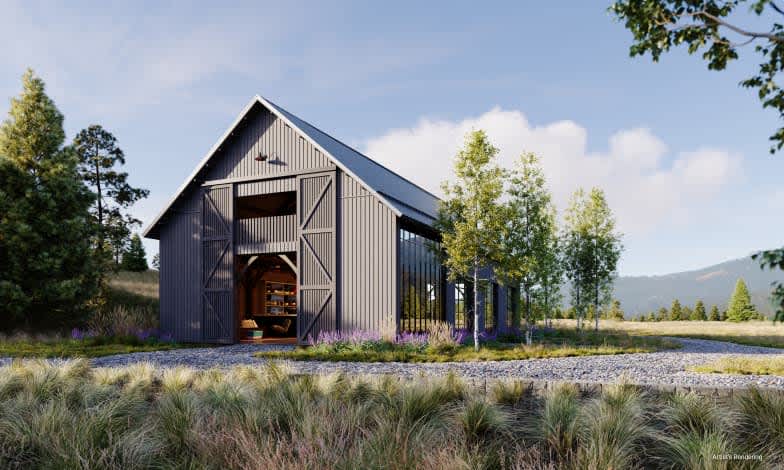
Courtesy Aspen Valley Ranch
Residents can also avail of the barn’s second floor, featuring a games area with ping-pong and pool tables and classic arcade games such as Pac-Man and Skee-Ball. The adjoining bar, lined with premium wine, and spirits such as Macallan 18-year scotch and Clase Azul Ultra tequila, retailing for close to $2,000 a bottle, is a big attraction for residents, Chen said. “Our owners are welcome to enjoy the alcohol for no charge,” he said. “Our development has a gorgeous swimming pool and spa and a massive gym, but the barn is where they most want to be.”
This article originally appeared on Mansion Global .
This stylish family home combines a classic palette and finishes with a flexible floorplan
Just 55 minutes from Sydney, make this your creative getaway located in the majestic Hawkesbury region.









